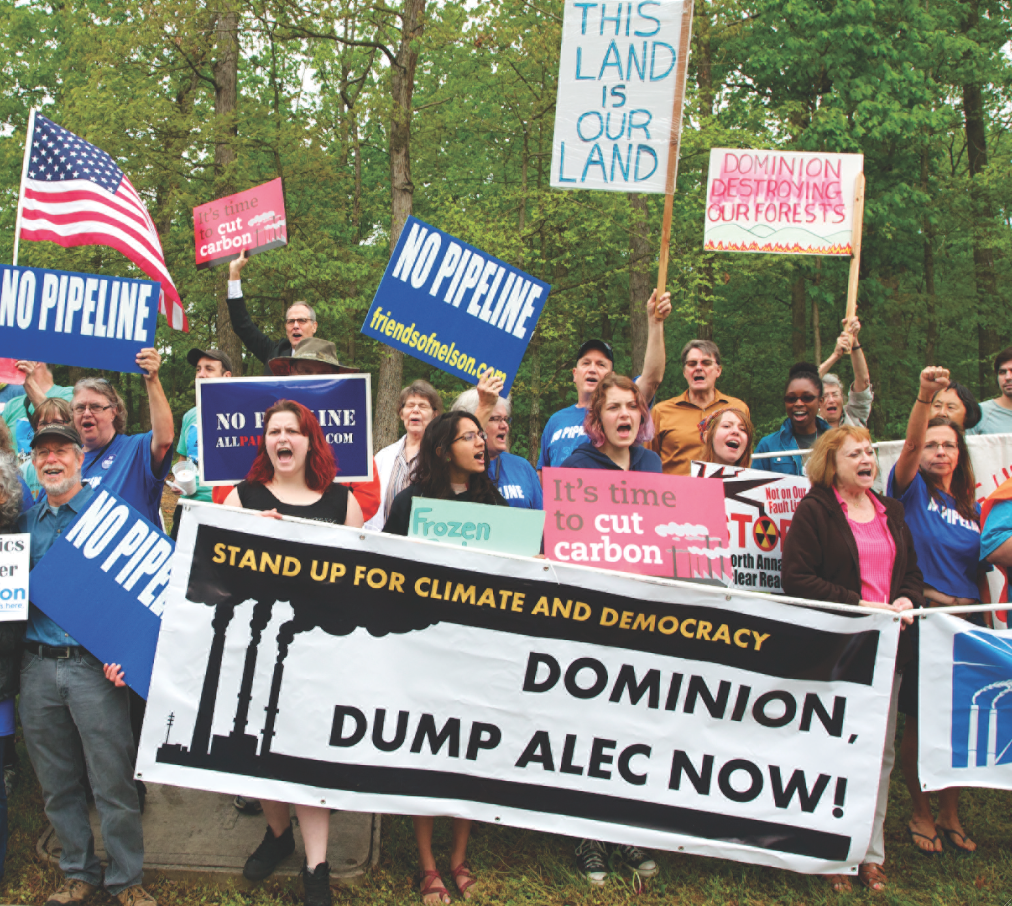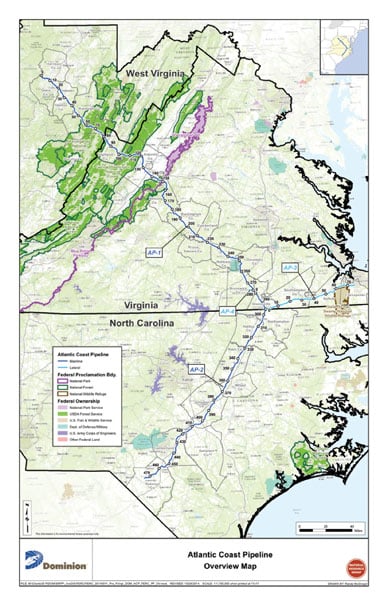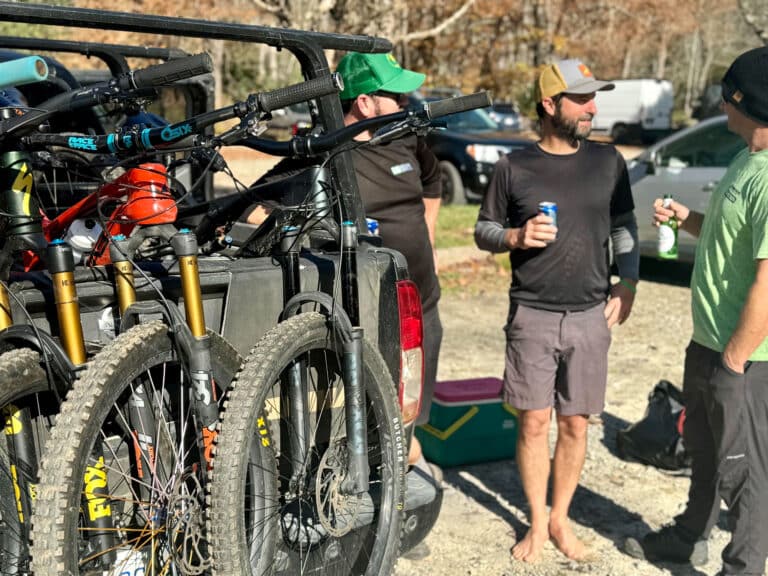Fracking is bad enough. Now, a pipeline pumping fracked natural gas is planned for our Blue Ridge backyard.
The 550-mile Atlantic Coast Pipeline will run from Harrison County, W.Va., to Robeson County, N.C., cutting a broad swath through prized public lands, including the George Washington National Forest, and over the Appalachian Trail in Virginia.
The Atlantic Coast Pipeline (ACP) is a collaboration between four large energy companies (Dominion Resources, Duke Energy, Piedmont Natural Gas, and AGL Resources), and it will pump 1.5 billion gallons of natural gas daily. The pipeline will be buried under several feet of dirt. So what’s the problem? For one thing, says Greg Buppert, a senior attorney at the Southern Environmental Law Center, it would require a permanent 75-foot easement above ground. That means an ugly, treeless gash would ruin views, promote invasive species, and otherwise diminish the GW’s wild character forever. “The part of the forest where the pipeline is proposed contains some of the best remaining wildlife habitat in Virginia and some of the last intact contiguous forests in the Eastern U.S.,” he says. “It would permanently fragment these forests.” Neighboring Monongahela National Forest and other sensitive public and private lands also would be destined for the chain saw. Vital water supplies would be threatened, given that the pipeline would be built on fragile topography shot through with underground drainage systems, sinkholes, and caves. Sedimentation and erosion would foul high-quality streams, and soil compaction would diminish productive agricultural land. And then there’s the ever-present threat of leaks, which would poison wells and groundwater and emit a potent greenhouse gas.
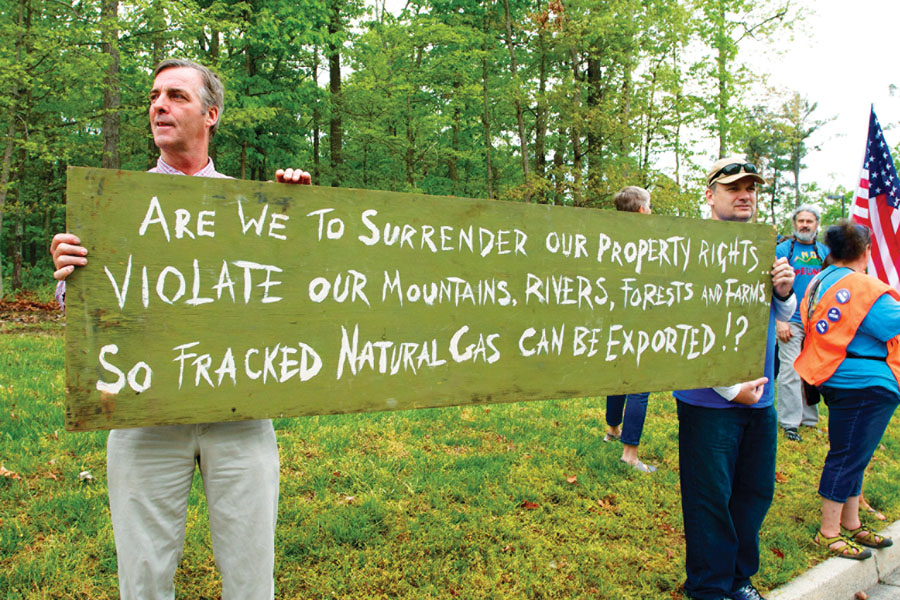 But concerned citizens will have their hands full if they want to stop or even slow down the project; the energy companies are hell-bent on completing it and cite the usual litany of spurious or exaggerated economic perks, including jobs and cheaper energy. But it’s clear that the main beneficiaries will be the energy companies themselves. Perpetuating Appalachia’s addiction to fossil fuels is in no one’s long-term interest except for those who produce the stuff.
But concerned citizens will have their hands full if they want to stop or even slow down the project; the energy companies are hell-bent on completing it and cite the usual litany of spurious or exaggerated economic perks, including jobs and cheaper energy. But it’s clear that the main beneficiaries will be the energy companies themselves. Perpetuating Appalachia’s addiction to fossil fuels is in no one’s long-term interest except for those who produce the stuff.
How will tourism be affected if classic Eastern forest vistas are marred by a giant clear-cut eyesore snaking over the landscape? How will farmers fare when they try to cultivate degraded land? How many of the purported economic gains will accrue to locals who have to live with the environmental and safety concerns?
And don’t forget the massive hit to property values for everyone who is forced to grant a pipeline easement on their property. According to Nancy Sorrells of the Augusta County Alliance, pipeline companies are legally considered public utilities. That means the energy companies can claim easements on private property via eminent domain, assuming the Federal Energy Regulatory Commission (FERC) approves the pipeline. As a result, property owners could have part of it running 25 feet from their homes or 150 feet from wells that they and their families rely on for drinking water, along with a 75-foot swath above ground that can never be planted or built upon. “Eminent domain was created so that one curmudgeon couldn’t keep a school or a water line from being built,” Sorrells says. “Now, a for-profit corporation under the guise of being a public utility is using eminent domain for their profit.”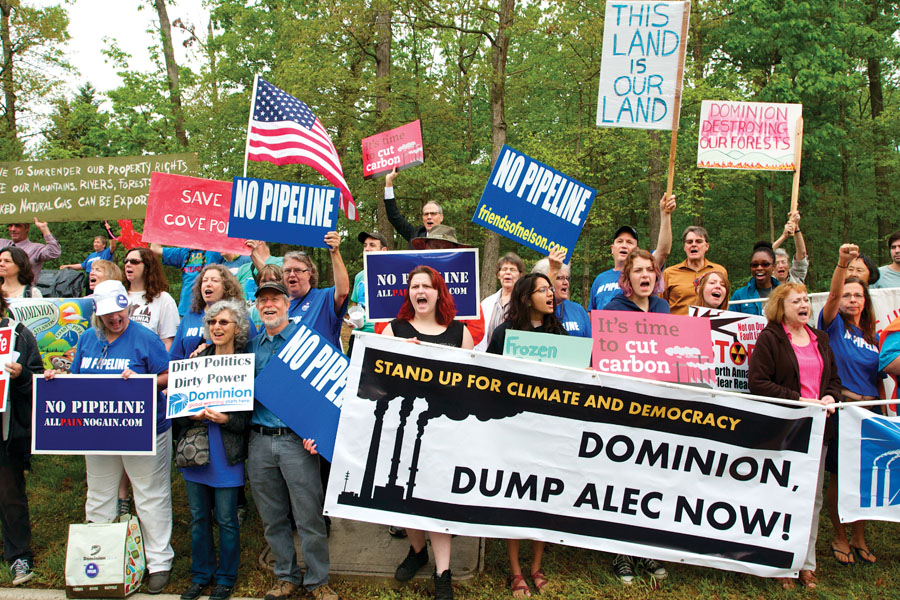 Water sources are especially vulnerable. “150 feet is nothing. If someone has a leaking septic tank, it can affect somebody’s well miles away. It’s not an if—the pipeline will alter and permanently damage some of our water resources.” Of course, property owners will receive a one-time, lowball payment for their trouble and be dared to challenge it in court. Daunted by the legal fees necessary to take on such well-heeled adversaries, many won’t bother.
Water sources are especially vulnerable. “150 feet is nothing. If someone has a leaking septic tank, it can affect somebody’s well miles away. It’s not an if—the pipeline will alter and permanently damage some of our water resources.” Of course, property owners will receive a one-time, lowball payment for their trouble and be dared to challenge it in court. Daunted by the legal fees necessary to take on such well-heeled adversaries, many won’t bother.
Misty Boos, director of Wild Virginia, says she is “absolutely against” any pipeline, and especially one that runs through national forest land. Although she thinks the pipeline can be stopped altogether, if worse comes to worst, she has a common-sense suggestion that would limit the damage: use existing rights of way. “There are already pipelines and power lines running through those national forests,” she says. “For some reason Dominion isn’t considering them. It would certainly be less problematic if there weren’t a lot of brand-new clear-cuts.”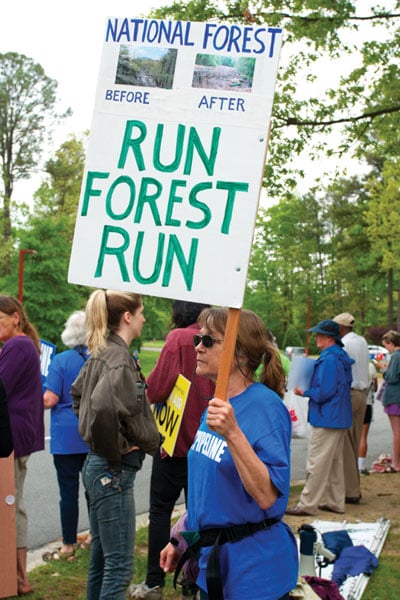
There’s still time for the actual public interest to prevail. Right now land is being surveyed along the proposed route—a process that often involves cutting down trees with little notice and can be done without the owners’ permission. The proposed route is in the pre-filing stage, and Sorrells says a formal filing could be submitted by late summer. FERC will probably decide whether to approve the pipeline a year or so later. That means opponents need to take advantage of the public comment period this spring to provide critical information for the agency’s environmental impact statement. “It’s very important for people to express their concerns to FERC so it can make the most responsible decision possible,” Buppert says.
